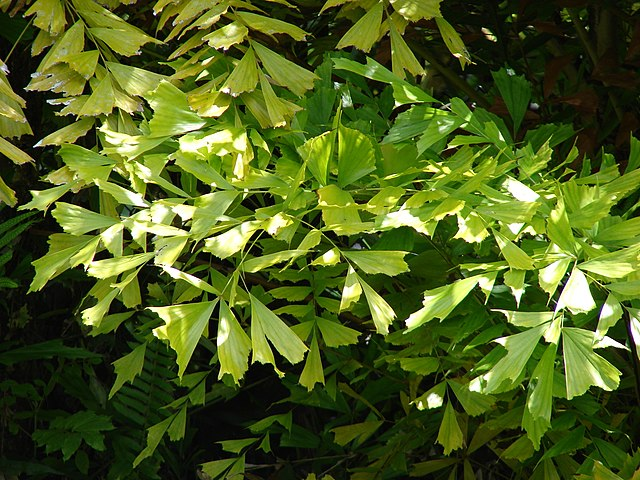Fishtail Palm
(Caryota mitis)
Fishtail Palm (Caryota mitis)
/
/

Forest and Kim Starr
CC BY 2.0
Image By:
Forest and Kim Starr
Recorded By:
Copyright:
CC BY 2.0
Copyright Notice:
Photo by: Forest and Kim Starr | License Type: CC BY 2.0 | License URL: https://creativecommons.org/publicdomain/zero/1.0/ | Uploader: Starr Environmental | Publisher: Flickr |
















































Estimated Native Range
Summary
Caryota mitis, commonly known as Fishtail Palm, is an evergreen palm tree native to the understory of monsoon forests and rainforests in Southeast Asia, including regions from India to Java and southern China. It is also found in secondary forests, which are forests regenerating largely through natural processes after significant disturbance. This species can reach up to 10 meters (33 feet) in height with clustered stems about 15 cm (6 inches) in diameter. The leaves are bipinnate, resembling the tail of a fish, and can grow up to 3 meters (10 feet) long, giving the palm its common name. The Fishtail Palm is known for its unique leaf shape and has become a popular ornamental plant in tropical and subtropical regions worldwide.
In cultivation, Caryota mitis is valued for its lush, tropical appearance and shade-providing canopy. It is often used in landscaping for its aesthetic appeal and ability to adapt to a range of soil types, though it prefers moist, well-drained soils. This palm thrives in partial shade to full sun and requires regular watering to maintain its health. It is not tolerant of cold temperatures and should be protected from frost. While it is generally low-maintenance, Caryota mitis can suffer from potassium deficiency, which can be mitigated with appropriate fertilization. It is also important to note that the plant’s sap can cause skin irritation. Due to its potential invasiveness, gardeners should be cautious when planting it outside its native range and check local regulations.CC BY-SA 4.0
In cultivation, Caryota mitis is valued for its lush, tropical appearance and shade-providing canopy. It is often used in landscaping for its aesthetic appeal and ability to adapt to a range of soil types, though it prefers moist, well-drained soils. This palm thrives in partial shade to full sun and requires regular watering to maintain its health. It is not tolerant of cold temperatures and should be protected from frost. While it is generally low-maintenance, Caryota mitis can suffer from potassium deficiency, which can be mitigated with appropriate fertilization. It is also important to note that the plant’s sap can cause skin irritation. Due to its potential invasiveness, gardeners should be cautious when planting it outside its native range and check local regulations.CC BY-SA 4.0
Plant Description
- Plant Type: Tree
- Height: 20-33 feet
- Width: 10-20 feet
- Growth Rate: Moderate
- Flower Color: Cream, Yellow
- Flowering Season: Spring, Summer
- Leaf Retention: Evergreen
Growth Requirements
- Sun: Part Shade
- Water: Medium
- Drainage: Medium, Fast
Common Uses
Bee Garden
Natural Habitat
Understory of monsoon forests and rainforests, including secondary forests
Other Names
Common Names: Tufted Fishtail Palm, Clustering Fishtail Palm, Burmese Fishtail Palm, Buschige Fischschwanzpalme, Caryote Doux, Beridin, Fish-Tail Palm, Tuvad Fiskstjärtspalm, 叢立孔雀椰子
Scientific Names: , Caryota mitis, Caryota furfuracea, Caryota sobolifera, Caryota propinqua, Caryota speciosa, Caryota griffithii, Caryota griffithii subsp. selebica, Caryota griffithii var. selebica, Caryota javanica
GBIF Accepted Name: Caryota mitis Lour.